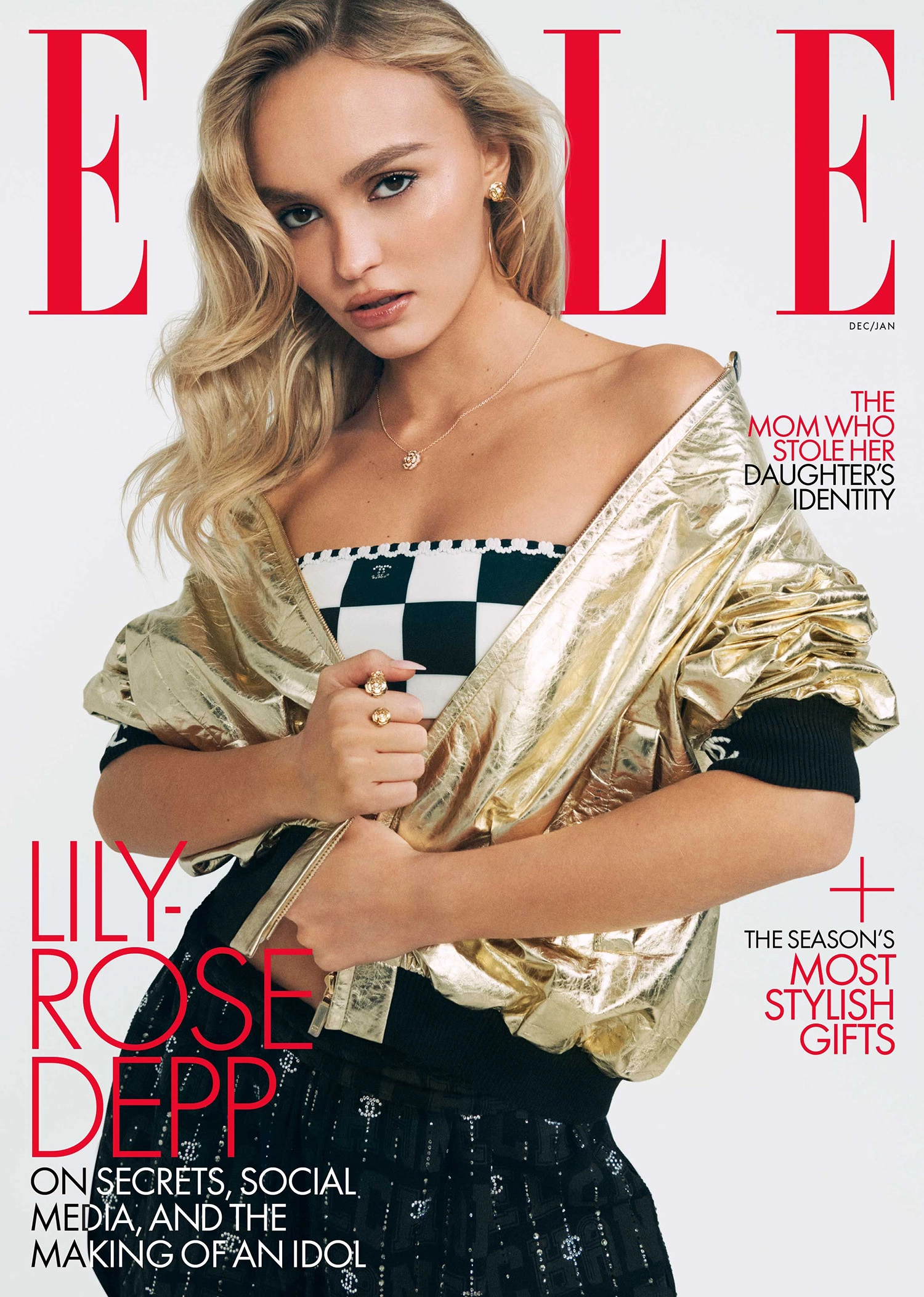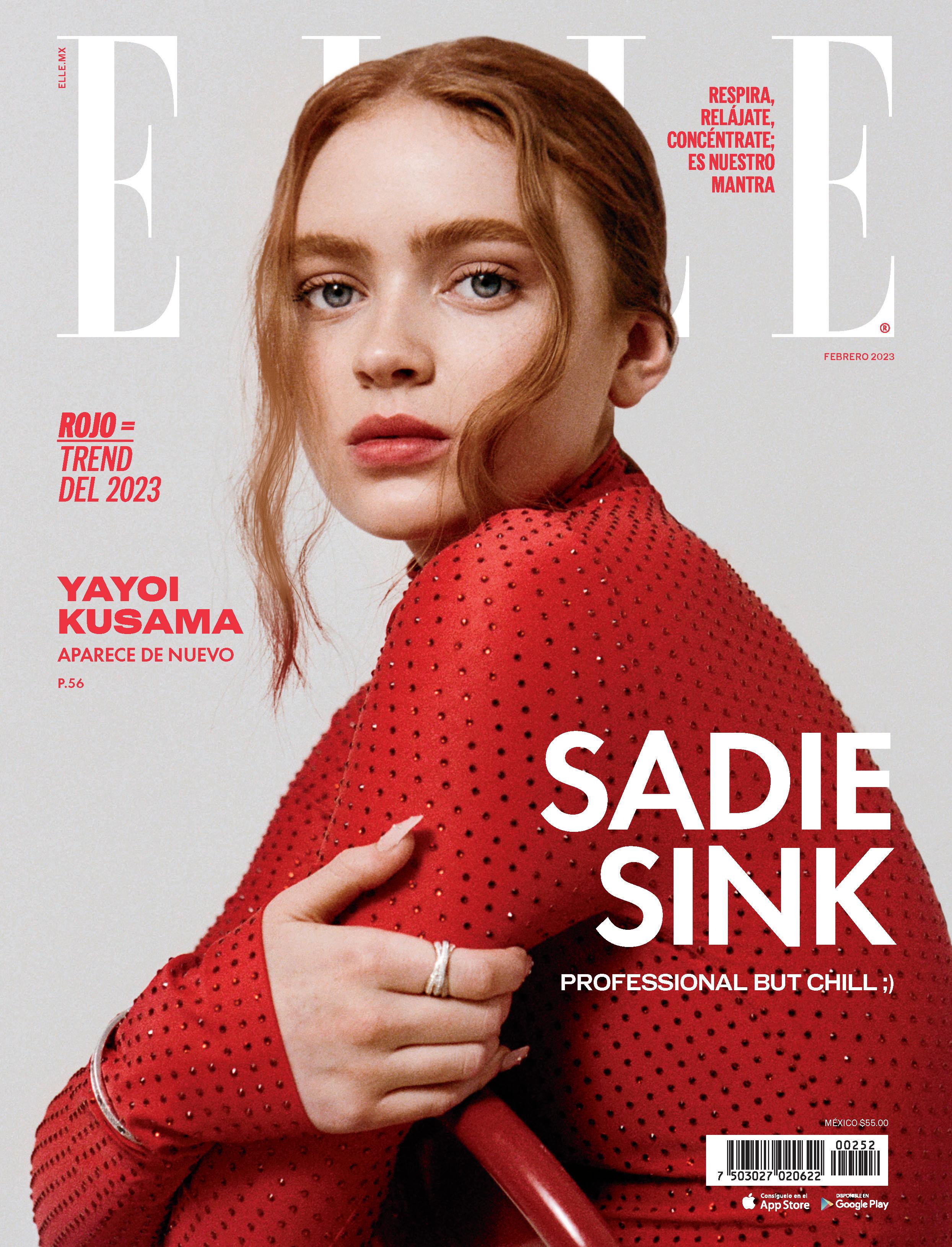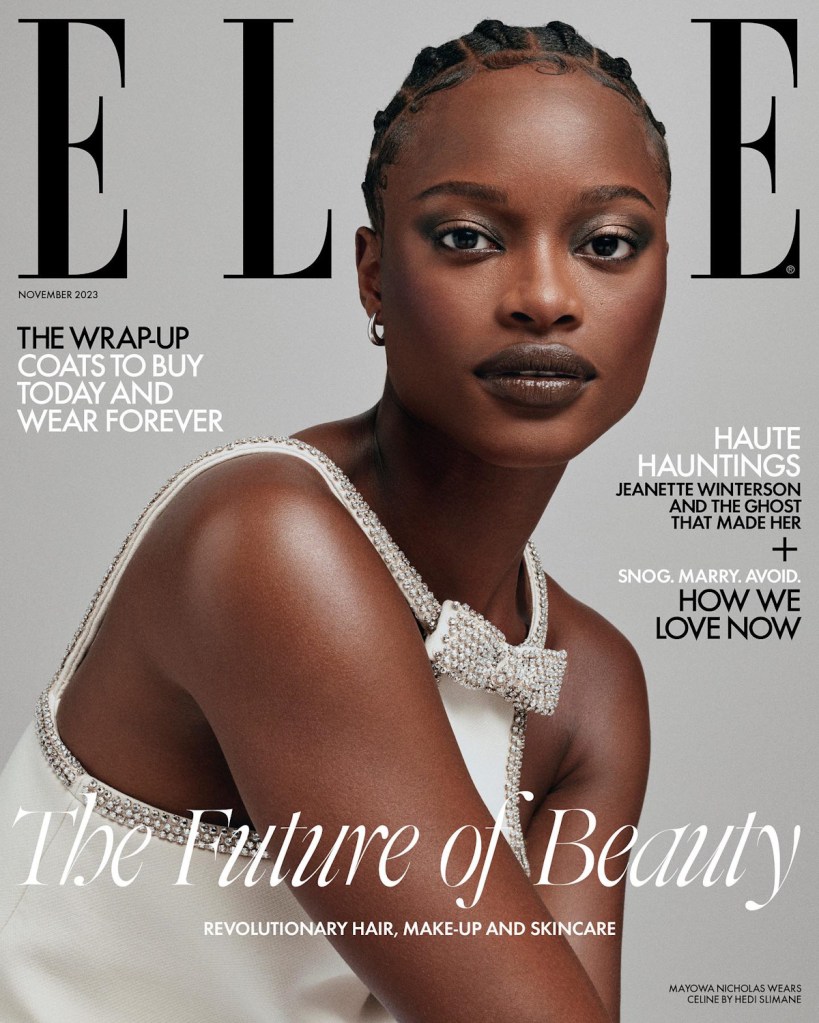The True Story Of Elle Brand Origin: A Look Back At A Style Icon
Have you ever wondered about the beginnings of Elle, that magazine which seems to know everything about what's cool and what's next? It's a name we see everywhere, from fashion spreads to beauty guides, and even, apparently, when thinking about wellness routines or, you know, getting ready for a flight into space. There's a real story behind how this influential brand came to be, and it's quite fascinating, so.
Many people know Elle for its sharp reporting and rich visual content, offering a mix of high fashion and personal style. It's for the bold and independent, a publication that helps stylish, creative women stay first to know. But where did this powerful voice in fashion, beauty, and lifestyle actually begin? That's what we'll explore.
Understanding the Elle brand origin helps us appreciate its current standing, too. It’s not just a magazine; it's a cultural touchstone that has, in a way, shaped how we think about style and what it means to be a modern woman. This is a story that goes back further than you might think, really.
Table of Contents
- The Birth of a Vision: How Elle Magazine Started
- Key Founding Milestones
- The Early Days and Its Impact
- A Voice for Modern Women
- Elle's Global Reach
- From Pages to Digital: Elle's Evolution
- The Elle Legacy Today
- Frequently Asked Questions About Elle
- A Lasting Influence
The Birth of a Vision: How Elle Magazine Started
The story of Elle, a very influential publication, begins in post-war France. This was a time when women were looking for new ways to express themselves and, in a way, redefine their roles. It was a period of fresh starts and new possibilities, and the world was ready for something different, apparently.
It was Hélène Gordon-Lazareff, a truly remarkable journalist, who envisioned a magazine that spoke directly to these changing times. She had, you know, a clear idea of what she wanted to create. Her vision was for a publication that wasn't just about high fashion, but also about the everyday lives of women.
Hélène Gordon-Lazareff, with her husband Pierre Lazareff, brought this idea to life. They aimed to create a magazine that was both aspirational and relatable, offering advice on style, beauty, and how to live a full life. This was, honestly, quite a groundbreaking concept for its time.
The founders believed that fashion should be accessible to everyone, not just a select few. This was a big part of their original mission, and it really shaped the magazine's early content. They wanted to empower women through style, and that, too, was a pretty radical idea.
They wanted to provide content that was smart and engaging, something that would resonate with women who were, you know, curious and eager to learn. This commitment to intelligent content has remained a hallmark of the Elle brand, even today, as a matter of fact.
The magazine was designed to be a weekly dose of inspiration, a guide for women navigating their personal and public lives. It was, in some respects, a very personal project for Hélène, reflecting her own experiences and desires for women.
They saw a need for a publication that mixed the serious with the lighthearted, offering both sharp reporting and, you know, fun style advice. This balance has always been a key part of Elle's appeal, making it a very unique voice in the media landscape.
Key Founding Milestones
Understanding the journey of Elle's beginning helps to see how it grew into the global powerhouse it is today. Here are some key moments in its early history, which, you know, set the stage for everything that followed.
| Milestone | Detail |
|---|---|
| Founders | Hélène Gordon-Lazareff and Pierre Lazareff |
| Launch Date | November 21, 1945 |
| Place of Origin | Paris, France |
| Original Focus | Fashion, Beauty, Lifestyle, Women's Empowerment |
| First Issue's Goal | To help women rediscover joy and style after the war |
The very first issue, launched in November 1945, arrived at a crucial moment. Post-war France was, you know, rebuilding, and there was a hunger for optimism and beauty. Elle offered just that, apparently.
Hélène Gordon-Lazareff, who had spent time in New York during the war, brought back a very American sense of modernity and directness to her publishing approach. This, in a way, blended beautifully with Parisian chic, creating a unique blend.
The magazine quickly gained a following because it spoke to women in a new, more personal way. It didn't just tell them what to wear; it also, you know, talked about their lives and aspirations, which was pretty cool.
It was a weekly publication, which was quite a feat for its time, especially with the printing and distribution challenges. This frequent schedule meant it could stay very current with trends and news, too.
The founders' vision was clear: to create a magazine that was a friend and a guide for women. They wanted to provide content that was both inspiring and practical, something that, you know, readers could actually use in their daily lives.
The name "Elle" itself, meaning "she" in French, was simple yet powerful, directly addressing its target audience. It was, essentially, a very direct and personal choice for a title.
The Early Days and Its Impact
In its early days, Elle quickly stood out from other publications. It wasn't just about showcasing haute couture; it also, you know, showed how to adapt high fashion for everyday wear. This made style feel much more attainable, honestly.
The magazine featured very bold photography and, you know, innovative layouts. This visual richness was a key part of its appeal, making each issue feel like a discovery. It was, in a way, a feast for the eyes.
Elle was also known for its sharp, witty writing. The articles weren't just informative; they were also, you know, entertaining and thought-provoking. This made reading Elle a truly enjoyable experience, essentially.
It covered a wide range of topics beyond just clothes, including home decor, culture, and, you know, societal issues. This broader scope helped it connect with women on many different levels, too.
The magazine championed women's independence and, you know, their right to make their own choices. This was a very progressive stance for the time, and it resonated deeply with its readers, obviously.
Elle played a big role in popularizing new fashion designers and, you know, emerging trends. It became a very influential voice in setting the style agenda, not just in France but across the world, pretty much.
It was seen as a very modern publication, always looking forward and embracing change. This forward-thinking approach has, in a way, remained a core part of the Elle identity, even now.
A Voice for Modern Women
From its beginnings, Elle aimed to be a true companion for the modern woman. It offered advice on everything from, you know, how to dress for success to managing a household. It was, in some respects, a very comprehensive guide.
The magazine understood that women's lives were becoming more complex, with more opportunities and, you know, more challenges. It sought to empower them to navigate these changes with style and confidence, essentially.
Elle encouraged women to be bold and independent, to embrace their own unique style rather than just following rules. This message of self-expression has always been, you know, a very strong theme in its pages.
It also featured interviews with influential women, showcasing their achievements and, you know, their perspectives. This helped to inspire readers and show them what was possible, too.
The magazine's approach to beauty was also quite progressive. It focused on enhancing natural beauty and, you know, promoting self-care, rather than just strict adherence to trends. This is, you know, a philosophy that still holds true today, as seen in its modern wellness guides.
It was a publication that genuinely listened to its readers, trying to address their questions and, you know, their needs. This human-centric approach helped build a very strong connection with its audience.
Elle became a trusted source for information and inspiration, a place where women could find both practical advice and, you know, creative ideas. It was, basically, a very valuable resource for many.
Elle's Global Reach
The success of Elle in France quickly led to international expansion. Its unique blend of fashion, lifestyle, and, you know, empowering content resonated with women across the globe. This was, honestly, a very natural progression.
The first international edition was launched in Japan in 1969, marking the beginning of its worldwide presence. This showed that its appeal was, you know, truly universal, not just limited to its French roots.
Today, Elle has editions in numerous countries, each adapting the core Elle spirit to its local culture and, you know, trends. This global network makes it a truly powerful force in fashion, pretty much.
Elle UK, for instance, continues the tradition of bringing the coolest, smartest fashion, beauty, and lifestyle content to its readers. It’s for stylish, creative women who want to be the first to know, you know, what's happening.
The global presence means that Elle can cover trends and stories from all over the world, offering a very diverse perspective. This broad view is, you know, one of its greatest strengths, too.
Each international edition maintains the brand's commitment to rich visual content, sharp reporting, and a mix of high fashion and personal style. This consistency helps maintain the Elle identity worldwide, basically.
This global reach also means that Elle can feature a wide array of celebrities and public figures, like Miley Cyrus discussing her sobriety journey or Taylor Swift's recent appearances. It shows how, you know, relevant the brand remains.
From Pages to Digital: Elle's Evolution
As the world changed, so did Elle. The brand recognized the importance of the digital space very early on, adapting its content to reach a wider, online audience. This was, you know, a very smart move.
Elle.com became a go-to destination for daily fashion news, beauty tips, and, you know, lifestyle content. It extended the magazine's reach far beyond print, essentially.
The digital platforms allowed for more immediate updates, covering the latest fashion trends and, you know, style advice as they happened. This speed was, in a way, a big advantage.
Elle also embraced social media, connecting with its audience on platforms where they spend their time. This helped foster a very interactive community around the brand, too.
Online, Elle continues to offer its modern wellness guides, exploring topics like vitamin patches or, you know, even the effectiveness of certain beauty tools. It shows its commitment to holistic living, obviously.
The digital format allows for new types of content, such as exclusive interviews with celebrities like Miley Cyrus, where she discusses personal choices that have, you know, "changed my entire life" for the better. This provides a very intimate look.
Elle also offers newsletters, like its horoscopes newsletter, providing weekly forecasts directly to subscribers. This is another way it, you know, keeps its audience engaged and informed.
The brand understands that its audience wants to be the first to know, and digital platforms allow it to deliver on that promise quickly and, you know, effectively. It's pretty cool, honestly.
You can learn more about Elle's digital presence on our site, and also find out more about the latest fashion trends that Elle covers.
The Elle Legacy Today
Today, Elle remains a powerhouse in the fashion and lifestyle world, a true testament to its strong foundation and, you know, its ability to adapt. Its origin story continues to influence its present-day mission, essentially.
It's still for the bold and independent, for women who want to be inspired and, you know, informed. The core values established by Hélène Gordon-Lazareff are, in a way, still very much alive.
From covering celebrity news, like Taylor Swift and Travis Kelce's recent sightings, to providing insights on wellness, Elle continues to be a relevant voice. It shows its wide appeal, too.
The magazine and its digital platforms offer a rich mix of content, from high fashion to personal style, ensuring there's always something new to discover. This variety is, you know, a big part of its enduring charm.
Elle's commitment to sharp reporting and rich visual content ensures that it remains a very high-quality publication. It continues to set standards in the industry, pretty much.
It also continues to champion women's voices and stories, whether it's an exclusive interview about a celebrity's burnout narrative or, you know, thoughts on getting glammed up for a flight. It’s about real experiences, obviously.
The brand's origin as a forward-thinking publication for women who wanted to be in the know is, you know, still very evident in everything it does today. It's a legacy that continues to grow.
For more on the history of influential magazines, you might find this article interesting: Magazine (Britannica).
Frequently Asked Questions About Elle
People often have questions about the history and focus of Elle. Here are some common ones, you know, that might help clarify things a bit.
When was Elle magazine first published?
Elle magazine first came out on November 21, 1945, in Paris, France. It was launched very soon after World War II, at a time when people were, you know, looking for hope and new beginnings.
Who created Elle magazine?
The magazine was created by Hélène Gordon-Lazareff and her husband, Pierre Lazareff. Hélène, a very visionary journalist, was the driving force behind its unique concept and, you know, its early success.
What does Elle magazine focus on?
Elle magazine primarily focuses on fashion, beauty, and lifestyle content. It also covers wellness, celebrity news, and, you know, cultural topics, aiming to provide a comprehensive guide for stylish, creative, and independent women. It's a mix of high fashion and personal style, too.
A Lasting Influence
The journey of Elle from its post-war Parisian beginnings to its current global standing is, you know, a remarkable one. It shows how a clear vision and a deep understanding of its audience can create something truly enduring.
Elle has, in a way, always been about more than just clothes; it's been about empowering women and, you know, reflecting their changing lives. This commitment to its readers is, basically, what has kept it relevant for so long.
Its story is a reminder that great ideas, when executed with passion and a finger on the pulse of the times, can have a very lasting impact. It's pretty inspiring, honestly.

Lily-Rose Depp in Chanel on Elle US December 2022/January 2023 by Felix

Elle Febrero 2023: Sadie Sink, professional but chill ;) by

Hits and Misses: Magazine Covers of November 2023 - theFashionSpot